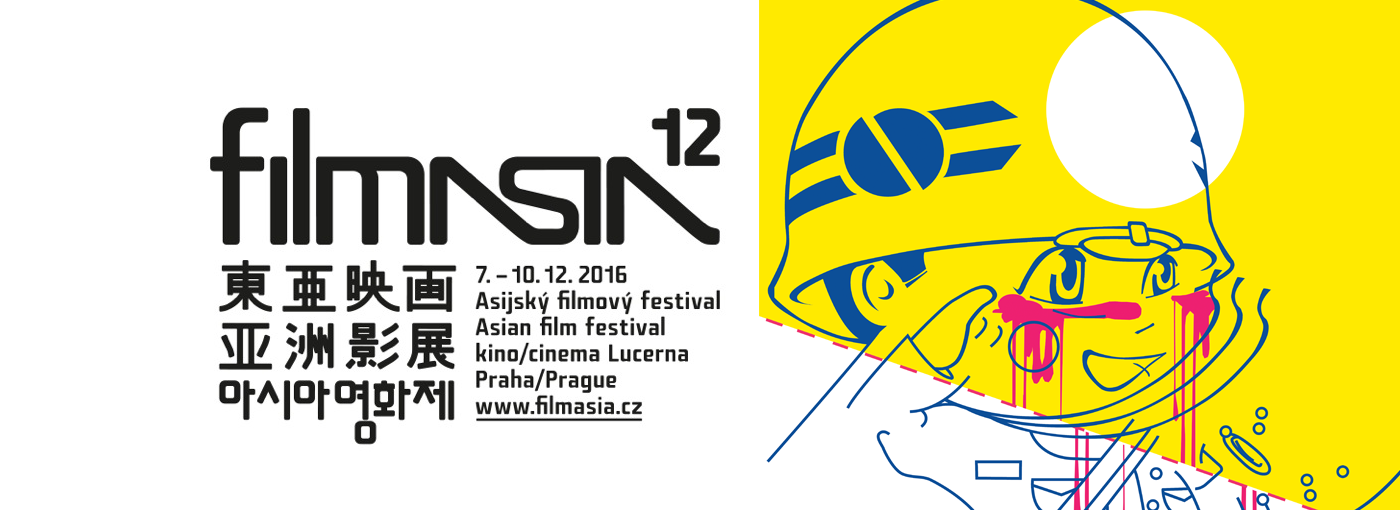
12th Filmasia film festival will again focus on the dynamic nature of main Asian film industries. As in the previous years, the program mostly features Korean films, specifically new motion pictures of local directors who have gained international respect. Park Chan-wook and Kim Jee-woon – leaders of their generation that brought worldwide attention to Korean cinematography thanks to their fresh and progressive style – both came back to work home after a rather ambivalent Hollywood experience. By contrast, Yeon Sang-ho and Na Hong-jin belong to a handful of great talents among younger filmmakers and both have affirmed their climbing reputation by a third, and fourth film, respectively. On top of that, both directors have come up with their own alternatives of the horror genre. We decided to use this in our program to recreate the concept of ‘horror night’ which will open with a mysterious horror, The Wailing, and then will be taken over by zombies in Yeong’s Train to Busan and Seoul Station.
Taiwan and China will be at this year’s Filmasia represented by two greatly respected figures from the opposite ends of the spectrum of film production. Major director of the Taiwanese new wave, Hou Hsiao-hsien, has returned after several years to international film festivals with Assassin – his own take on the Wuxia genre. Feng Xiaogang, a Chinese expert on box-office hits and spectacular period dramas, is sure to put a lot more direct emotional pressure on the audience.
Japan’s presence in this year’s program is only indirect. Apart from Park Chan-wook and Kim Jee-woon’s films, set during the Japanese occupation of Korea, the Land of the Rising Sun will be represented by a co-production love story by a globe-trotting director Lim Kah-Wai, taking place in Osaka, as well as The Red Turtle by Dutch animator Michaël Dudok de Wit, which is the first international project of the legendary Ghibli studio initiated by Hayao Miyazaki.
ZOMBIE NIGHT
The word ‘zombie’ comes from a Haitian dialect and refers to a deceased person who cannot find peace after death thanks to voodoo magic. Modern depictions of zombies do not necessarily involve magic to reanimate the dead, but use other methods such as a large dose of radiation, a virus or an accident in a top-security laboratory.
The undead have been present in cinematography since the ‘30s of the last century, but had not become part of pop culture until George A. Romero’s cult horror Night of the Living Dead (1968) and its huge success. Romero combined the features of zombies and vampires, and turned an undead monster into a dangerous killer spreading a deadly infection. But zombies, too, had to keep up with the times and so they sped up the pace and some started to hunger specifically for brains as in the parody Return of the Living Dead (1985). Still, in the ‘80s they were associated with B-film production. That changed with what would reaffirm the status of a pop-cultural icon and give rise to mass popularity of zombies – Michael Jackson’s Thriller music video (1982). And so, the new millennium already had the door open for box-office hits such as 28 days Later (2002), blockbuster World War Z (2013) or extremely popular TV series The Walking Dead (2010).
Zombies in current East Asian cinematography are based on the Western model. But until the ‘90s certain films made in Hong Kong featured a type of the undead which closely resembled the original Haitian concept, rather than the more recent American variations. These reanimated corpses controlled by magic can be seen in, for example, Encounters of the Spooky Kind (1980). This type of zombies was, however, forced out of the spotlight by the popular video game Resident Evil. Video games had a crucial role in the increasing popularity of zombies (not only) in Japanese popular culture, but also in the pop-culture of younger generations growing up at the turn of the millennium. Japanese cinemas around the year 2000 were featuring many zombie B-films such as Versus (2000), Stacy (2001) or Wild Zero (1999). At the moment, Asian zombie films are completely dominated by the aggressive and quick type of the undead, which you can see in both Train to Busan (2016) and Seoul Station (2016).